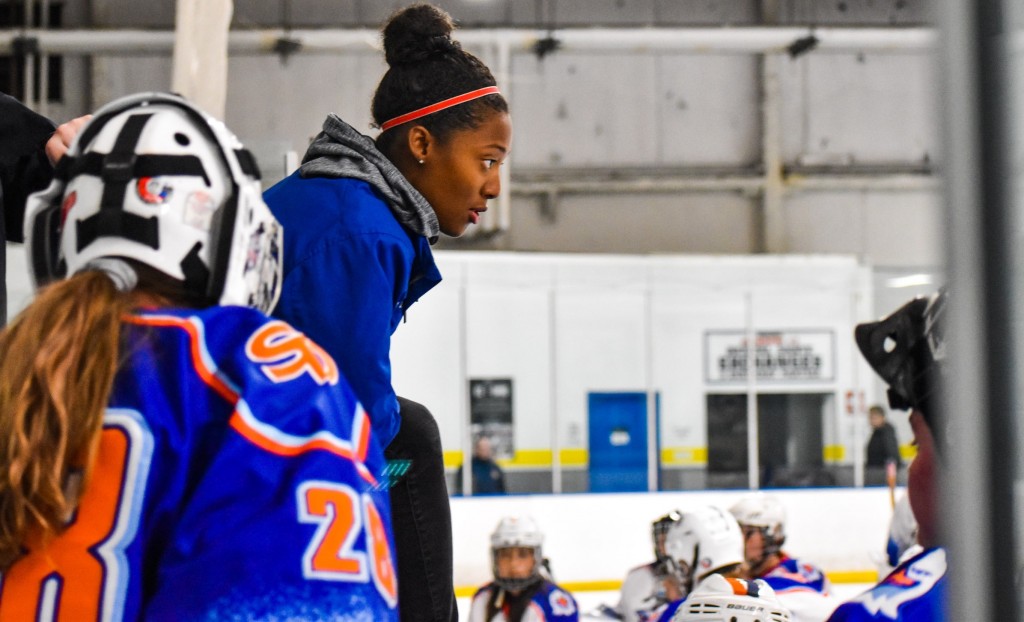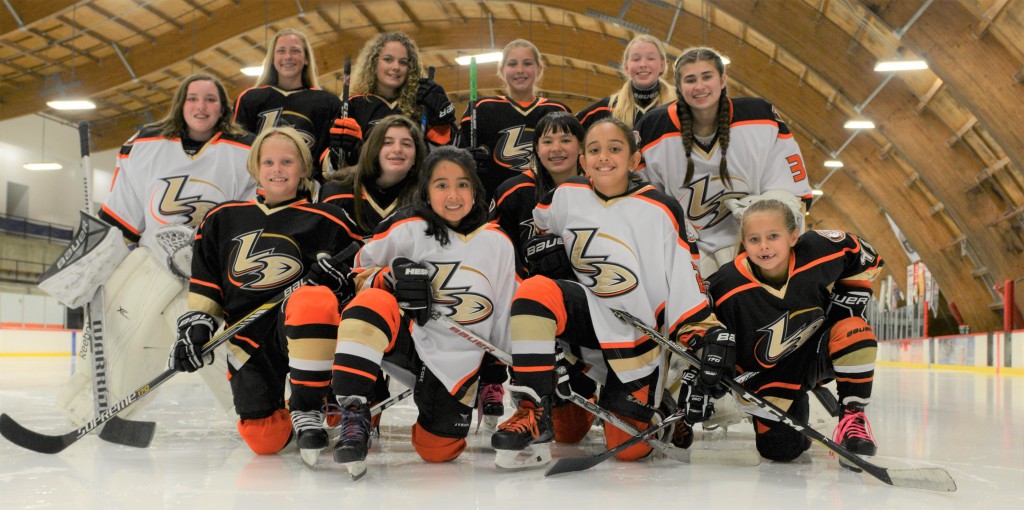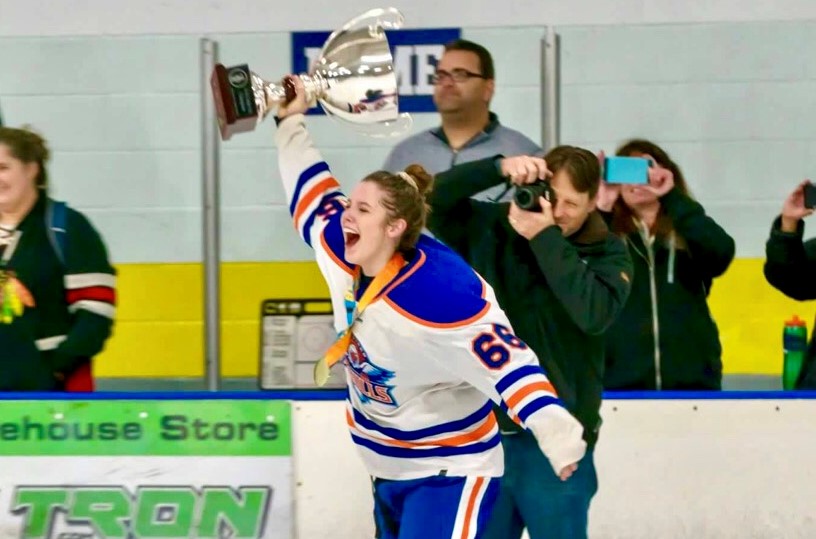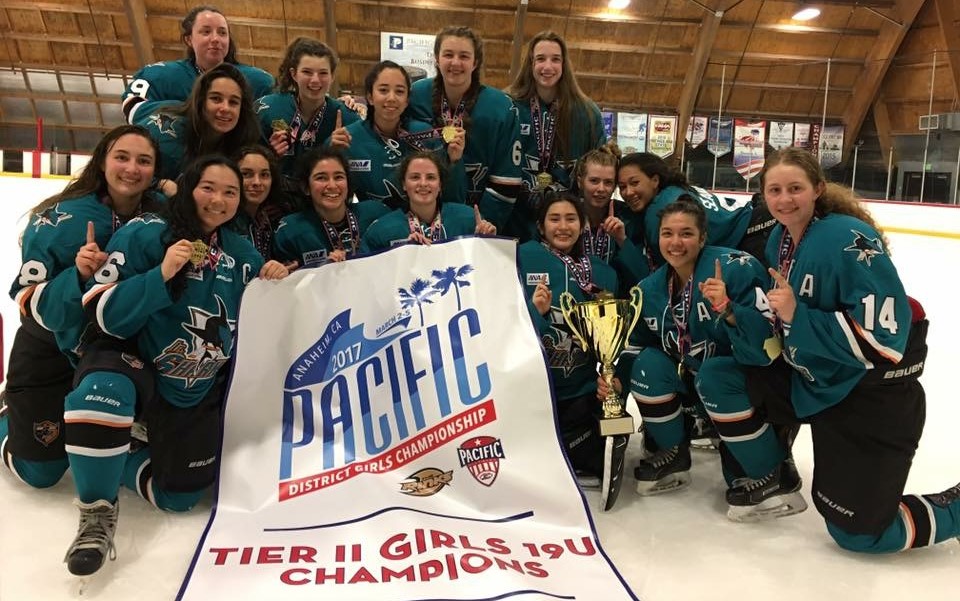West Coast hockey boom accentuated by growth of girls game, especially in California

As the game of hockey continues to grow, progress and improve on the West Coast, much of that growth has come in the realm of girls hockey.
With the explosion of the National Women’s Hockey League and more and more women’s college programs sprouting up across the country, there has never been a better time for girls to play hockey.
In California, a slew of programs across the state all boast girls hockey in one capacity or another.
All of those associations are stoked at the growth of the game in recent times and realize that slow growth is the right way to go.
“Thankfully, we continue to grow every year,” said Lions co-founder and board member Becki Winckler. “Last year, we sent our first alumni group off to play college hockey. We are creating a culture that is new for girls in the LA sports scene and that will take time, but we are making strides every year.”
“There are some obvious steps moving forward which I believe are already in place,” added Lady Ducks director Kathy McGarrigle. “Youth programs exist where, with learn-to-play programs, girls are joining in at record numbers. That leads to 8U girls teams that will be a direct push into the 10U, 12U and so forth as we move forward. Another key will be clubs that embrace the organic nature of growing the game. Girls teams will be lower-level A before they are AA, then AAA teams.
“Clubs that push too fast to be awesome have typically crashed and burned, so if these newer programs keep their players and move from A to AA as they have, they tend to produce much longer-term success and retention of their core group of players.”
Alex Morrison, the girls hockey director with the San Diego Jr. Gulls, loves the direction the game is going.
“Girls hockey is a tremendously fast-growing sport in California, as we have seen growth over the past few years, especially at the younger age groups,” Morrison said. “A trend like this is great for the future, as the more participants we have, the more young girls are excited that their friends are doing it, and want to try themselves.
“We have more clubs in the state than ever before. The Lady Ducks formed 20 years ago, thanks to Kathy McGarrigle, and they have stayed strong for two decades. Now that we have other clubs in the state forming house and travel girls programs, there are girls opponents for them to play, and it is more approachable for many families. Thanks to our Jr. Gulls, the LA Lions, Tri Valley Lady Blue Devils, San Jose Jr. Sharks and a newly formed Ontario Jr. Reign team, we are able to provide this competition without having to board an airplane to do so.”
In the northern part of the state, Livermore-based Lady Blue Devils are making an impact in the girls hockey footprint.
“Girls hockey in California is definitely on the rise,” said Lady Blue Devils director Megan Brettingen. “Growing up in Minnesota, hockey was a normal sport played by girls and everyone knew about it. When I moved out to California, I’ll be honest, I wasn’t sure how many girls teams were out here nor if they were competitive. Little did I know the girls side was booming down in Southern California and was picking up speed in the northern part.
“The girls love to compete with each other and it’s clear that every girl who puts on a pair of skates in this state knows how to play the game and has big dreams for themselves. They have so many females to look up to these days – Olympians, PWHPA players, NWHL players, collegiate players, players in their own organization, and even players in other organizations. All the teams that I’ve watched or coached in the last two years, it’s clear they all love to compete and want to improve their game in any way possible.”
One of the aforementioned collegiate players – Laguna Hills native Annie Pankowski – was part of an NCAA Division I national championship team last season as a senior at the University of Wisconsin and was also a finalist for the Patty Kazmaier Award as the top women’s college player in the country. She was also the top draft pick in the 2019 NWHL Draft and continues to represent the United States in international competition.
Pankowski grew up in the Lady Ducks organization and said the positive trend of girls hockey in the state is beyond exciting.
“We need to continue to make the game more visible and show young girls the path to college and maybe the U.S. Women’s National Team,” Pankowski said. “The women’s side of the game is about to take off in terms of visibility and I think that the more girls that get to watch the U.S. National Team play will inspire them to want to reach that stage. If we can get more events, such as the U.S.-Canada series in smaller markets and advertise them to the right crowds, not just hockey families, we might reach those girls who might not even know they want to play yet.”
Pankowski added that her success over the years can be attributed to so many individuals.
“I can’t thank the people who have helped me get to that next level enough,” said Pankowski. “Starting from Kathy McGarrigle and the coaches with the Lady Ducks, Larry Barron, Chris Martin and the team at Mettle Strength and Conditioning, Craig Johnson, Ryan Frost, and Scot Prohaska, to name a few, have been instrumental in pushing me to that next level. I am so grateful for this team that keeps me sharp when I come back to California.
“Even though California is not considered a hockey hotbed, there are some amazing people who love the sport and are very knowledgeable and talented that are coaching the next generation. As the scene of girls hockey grows in California, I would love to see more female coaches, but I know that will be a natural progression as the game grows.
“I aspire to be that person for these girls growing up in California to show them they can do it, too. I had the opportunity to coach a few girls over the summer and get to know them. It’s really awesome for me to get to hear from those girls who say they want to be just like me. It makes me feel like I have forged a path for them to reach the pinnacle of the sport.”
Ben Frank, the president of the Jr. Reign, feels the growth of girls hockey in California has not even scratched the surface.
“There is so much potential for the girls game to grow,” Frank said. “I know leaders of the girls programs have been pushing to get four-plus teams at some of the lower levels like 8U, and it will be amazing to see the day when there can be enough teams at each age group to have girls local league divisions that can play meaningful weekly game schedules against each other. I think we are getting closer.
“I see a lot more girls now at the entry levels and learn-to-play programs, which is great to see that barrier coming down culturally and perception. Now, we need to make sure that every rink and program has a clear path to keep these girls in the sport having a great experience and knowing that there is something more for them and that they have an exciting and important and unique pathway for them as a female hockey player here in California.”
Moving forward, the common theme among those spearheading girls hockey efforts is continuing to knock down barriers and obstacles.
“The girls game needs support from the top all the way down to supporting each other,” said Winckler. “We have a great working relationship with some of the other smaller California clubs and others in the Pacific District. We bounce ideas off each other and share our struggles. Mostly, we ask each other questions.
“We also need support from the boys programs as well. We need them to understand there is a need for girls hockey. In an ideal world, every boys club would have a sister club, but that’s not realistic for smaller clubs. We get that, but those smaller clubs should be encouraging their girls to play tournaments on girls teams to experience the camaraderie and confidence that can come from playing with girls as young as 8U. Then, ideally, it’s a smooth transition if and when the time comes for her to play only girls. It may even keep a girl playing the sport longer.
“We have about 100 girls currently in our program and most of them would not be playing travel hockey had the LA Lions not started. That’s amazing. We have also managed to keep some older girls playing longer than expected, and that speaks to our club culture.”
Morrison noted that misconceptions regarding girls hockey is another challenge many programs face.
“One of the biggest challenges we face is the spread of misinformation about the need to play boys hockey in order to improve their skills and/or be recruited by colleges – this is the opposite of reality,” said Morrison. “A vast majority of NCAA Division I and Division III women’s hockey recruits come directly from girls hockey programs. There are quotes from college coaches talking about the preference of taking a player that has come from a girls program over a checking boys program, mainly because they already know the female game, and don’t have to relearn it.
“The other main challenge that we face is that there aren’t enough teams to play in a consistent league type setup. Down in San Diego, our tier level team is having to travel by plane to four tournaments this season in order to prepare themselves to compete at the Pacific District tournament up in Seattle this February. Trips to Rochester N.Y., Chicago, Boulder and San Jose make the cost of playing something that unfortunately prices some players out.”
“For some hockey parents, they think that ‘boys means better’ when, in fact, girls get far more key playing minutes and puck touches for them to actually be better in the girls game,” added McGarrigle. “It’s just a myth that needs to find a breaking point out here in the West as it did 10 or more years ago in the Midwest and East Coast.”
McGarrigle noted seeing the yearly numbers grow in California has been wonderful to witness firsthand.
“California really started to organize girls teams in about 1995 with two tournament-only style teams in the south and the northern part of California,” explained McGarrigle. “When we started in 1999, our plan was to be a long-term, season-long player development program from the youngest to the high school-age team. The Sharks were already starting up, too, so in those 20 years, female hockey in our state has seen tremendous growth. California has passed all other states in the Pacific District in registration numbers, including Alaska, as of 2016.
“Things are looking bright in this part of the world. The growth is way ahead of pace with the USA Hockey’s female growth. While the rest of the country is growing the girls game at 4-5 percent a year, California has been outpacing that at almost 20 percent a year for several years now.”
For the Lady Blue Devils, location can be looked at as an issue, but Brettingen wants to erase that thought.
“I believe the girls game can continue to grow by all of the organizations supporting each other and helping in different ways,” said Brettingen. “Up in Northern California, there are only two full girls organizations – us and the Jr Sharks girls. I have seen some effort this year put in by 2-3 surrounding organizations to get a girls program going, but there hasn’t been a lot of support. Each organization, in Northern and Southern California, should be trying to support and help other programs grow and encourage them to get a girls program going. Most of the clubs that already have a girls organization have some sort of backing or sponsorship by a professional team of some sort.
“Our organization has found success in creating a ‘Girls Give Hockey A Try’ for free four-week program with current players helping me coach on the ice. We found that if we have entry-level programs that are co-ed, it deters a young female from fully trying the program because they compare themselves to the boys on the ice. Where with a girls-only program and female leaders running it, girls have been more inclined to participate and continue with the sport. If other programs can adopt some sort of program similar, I think it will help the growth of the girls game out in California a lot.”
Still, at the end of the day, these associations are proving that hard work pays off and continued growth is inevitable.
“We are doing this because we believe in our product,” Winckler said. “We need families to buy in while we create a culture. We will all reap the rewards, but it’s all going to take time. Investments take time. Making something from nothing takes time.”
— Matt Mackinder
(Feb. 10, 2020)














